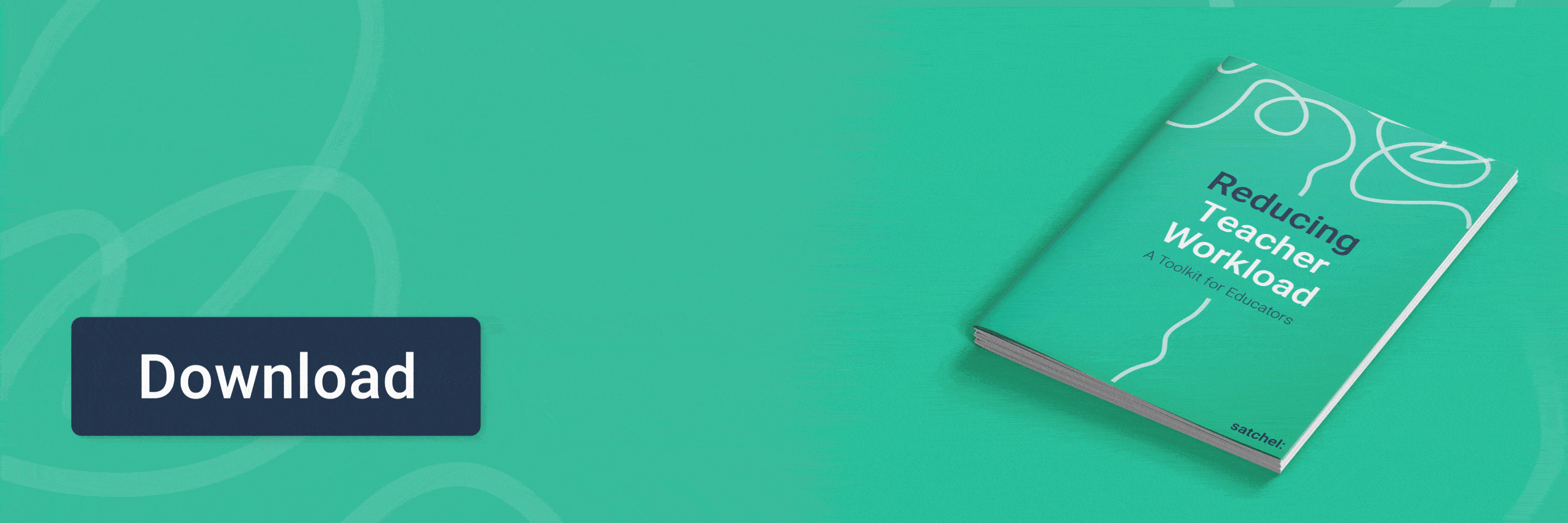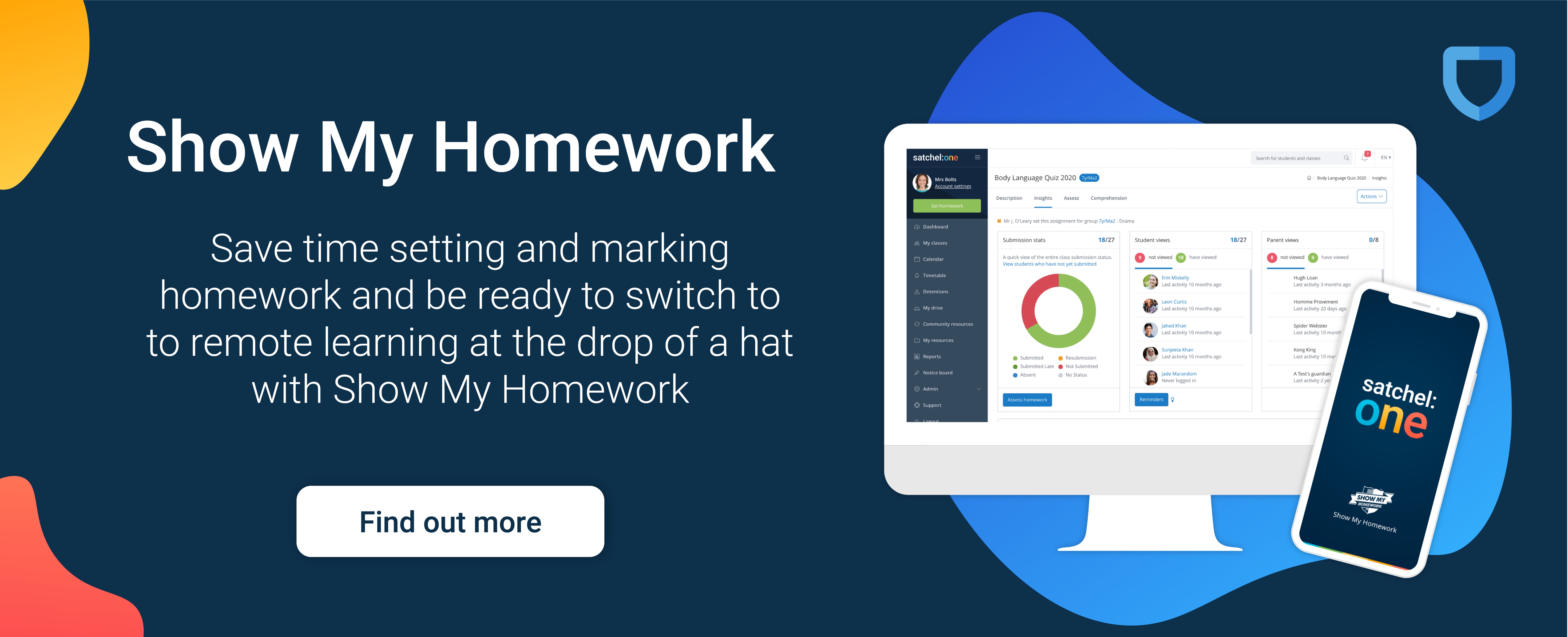Author: Ben Greenwood
Posted: 21 Jun 2021
Estimated time to read: 6 mins
The aim of homework has always been to increase students’ academic ability. But with a raft of research now showing that there’s much more to this than classroom teaching and tests, could the future of homework ring in a new era for extracurricular learning?
Homework in the 21st century is a far cry from the black and white photocopies of textbook pages that I experienced when I was at school. Both technology and attitudes have moved on since then.
The modern student has never known a time without the internet or smartphones. This is often posed as a negative (the stereotype of the screen-obsessed teenager springs to mind here). But with around 82% of job roles now requiring some form of technological ability, being a digital native has become a huge advantage in the modern job market.

The challenge for schools then is to harness these skills and apply them to learning and homework. To teach students that their ability to learn how to use a new OS in a couple of minutes or find a way around the school’s firewall can be applied to other academic subjects too.
It’s about drawing the real world and the academic world together with the power of tech and mentorship. And it doesn’t have to be as complex as it sounds!
What needs to change with present-day homework
It has its critics, but homework can be a really useful tool for students, not just academically, but for wider life skills too. But when assignments have been thrown together simply to satisfy the school’s homework policy, it’s likely that the student isn’t going to get a lot out of it.
Good homework assignments need to have a purpose and to add value to the student’s learning journey. Instead of dismissing homework as a relic of the past, we need to look at it as an ever-changing, evolving practice.
Beneath the workings of an electric car, you’ll still find the same brakes, wheels and chassis designs that have been around for decades. Why? Because they work. All they needed to bring them into the 21st century was a little innovation around them - homework is the same.
By using the technology and new pedagogical ideas of the present day, we can give our students a new and refreshing take on homework.
How tech is used for homework
One common criticism of technology in homework is that it can be a distraction or a hurdle to the lesson the teacher is trying to teach. This is sometimes true. Students like to get their hands on tech, it’s what they’re comfortable with. So when given the opportunity to use it, without a meaningful and challenging goal, they will likely use it for something else.
A more considered approach to using tech is needed. Whilst we know how powerful online learning platforms are, students still need to learn within their physical environment too. With young people today spending more time online than ever before, real-world learning is crucial to their development.
Some schools have begun setting homework, delivered online or via an online learning app, that suggests activities like chess with an adult or reading for an hour at home. Whilst this might seem basic or trivial, these activities help students to get back in touch with their physical environment.
Balancing home and school life
The pandemic fast-forwarded attitudes to distance learning and blended learning. This meant what was previously a pipedream for schools, successful home learning, quickly became a reality.
That’s not to say that we should all switch to distance learning and close the schools, we’d have some pretty unhappy parents to deal with if we did. And despite the success of distance learning, the benefits of classroom learning still outweigh learning from home. Teacher-led learning is not something we should be trying to replace. What it did show is that our approach to home learning in regards to homework was out of date.
In March 2020, whole timetables were pushed online. Students learnt from pre-recorded videos and interactive webinars. It proved that students can learn at home effectively. This strengthens the argument for flipped learning as a realistic approach.
By giving students the tools they need to learn successfully at home, we can better prepare them for classroom learning and even change the way we weight lessons in favour of home or school. But don’t be tempted to make an onus out of home learning - studies have found that too much homework (more than 2 hours per day) can be counterproductive to a student’s development.
Giving teachers the freedom to create
Two things limit a teacher’s ability to create engaging and exciting homework tasks:
- Inflexible homework policies
- Lack of time
We know that our teachers are passionate about teaching and that they spill that passion into their work. If they aren’t creating engaging homework tasks, it’s not because they don’t want to.
The confines of the school’s homework policy, or a lack of time to create meaningful tasks, means that teachers often have to use quick and easy tasks copied from teacher message boards, or crusty old worksheets from another age.
By saving teachers time and by giving them the flexibility to create the kind of homework they see fit, you allow internal development to flourish in your school. Then, through homework workshops and sharing best practice sessions, you can ensure that the very best ideas are replicated throughout school.
This makes for more engaged students, happier teachers and a more successful and transparent school.
What we can do to make homework better serve students
- More flexibility for teachers
Teachers need the freedom to create engaging tasks, to be part of the changing tides in the education system. Post pandemic education is going to be quite different to what we knew before, and the people who are there to guide our students through it need to be able to adapt and evolve with the times.
Allowing teachers to be more flexible might include:
- More working from home
- Setting adequate allotted time for lesson creation during the working day
- Allowing more freedom with homework tasks - mixing academic and life skills
- Promoting sharing tasks and best practices between colleagues
Make school tech ‘invisible’
Tech makes learning more accessible and has improved school organisation, parental engagement and students’ accountability. Homework tracking software keeps tabs on who has completed their homework and even gives schools access to detailed analytics so they can fine-tune their approach.
But with so much tech at our fingertips, it's easy to get carried away. Just because you can set an online ebook version of An Inspector Calls, doesn’t necessarily mean you should. Blue light can be damaging to our eyes, but on a deeper level than that, students are missing out on the physical activity of reading.
School tech has dramatically improved the way we work in schools - there’s no denying it. But we shouldn’t let it seep into every aspect of teaching. As Chris Lehman, pioneer of the school 2.0 movement, puts it, “Technology [in schools] must be like oxygen; ubiquitous, necessary and invisible.”
Don’t shut out the world
Earlier we touched on the all-encompassing aspect of technology and how it can sometimes shut out the real world. Avoid this by merging homework tasks with home life as much as possible.
Instead of looking at homework as an extension of schoolwork to be done at home - instead view it as an extension of home life that is more focussed on learning. Family time and home life is a hugely important part of a child’s development and it should be approached with empathy and sensitivity.
When creating a homework task, think of a child spending time with their siblings or parents and consider whether this task is important enough to take them out of that bonding time for half an hour to an hour. Alternatively, you can provide tasks that actively enrich this time at home.
Homework activities that involve the whole family or an adult can actually have a transformative impact on students’ learning. Studies have found that students whose parents are actively involved in homework tend to be more confident in school, have higher self-esteem in general and receive higher grades than those with less involved parents or guardians.
Try creating assignments that require interaction with others and take place in the real world. Perhaps an interview with a relative, a flashcard game or a DIY project that parents can get involved with.
Conclusion
The future is still a little foggy for homework, as it is for education in general. But if there’s one takeaway from this blog it’s that learning at home will always be an important part of a child’s development. Similarly to not setting homework at all, setting unengaging, difficult or thoughtless homework will drive students away from learning in general - something we can’t afford to do after so many months of missed lessons and disrupted study.
The key for schools will be using technology to streamline the administrative duties that come with homework, but to continue innovating when it comes to the actual content of their homework tasks. Whatever happens, the next couple of years have the potential to transform the education sector - what we do now could decide how the future of teaching and learning looks.




